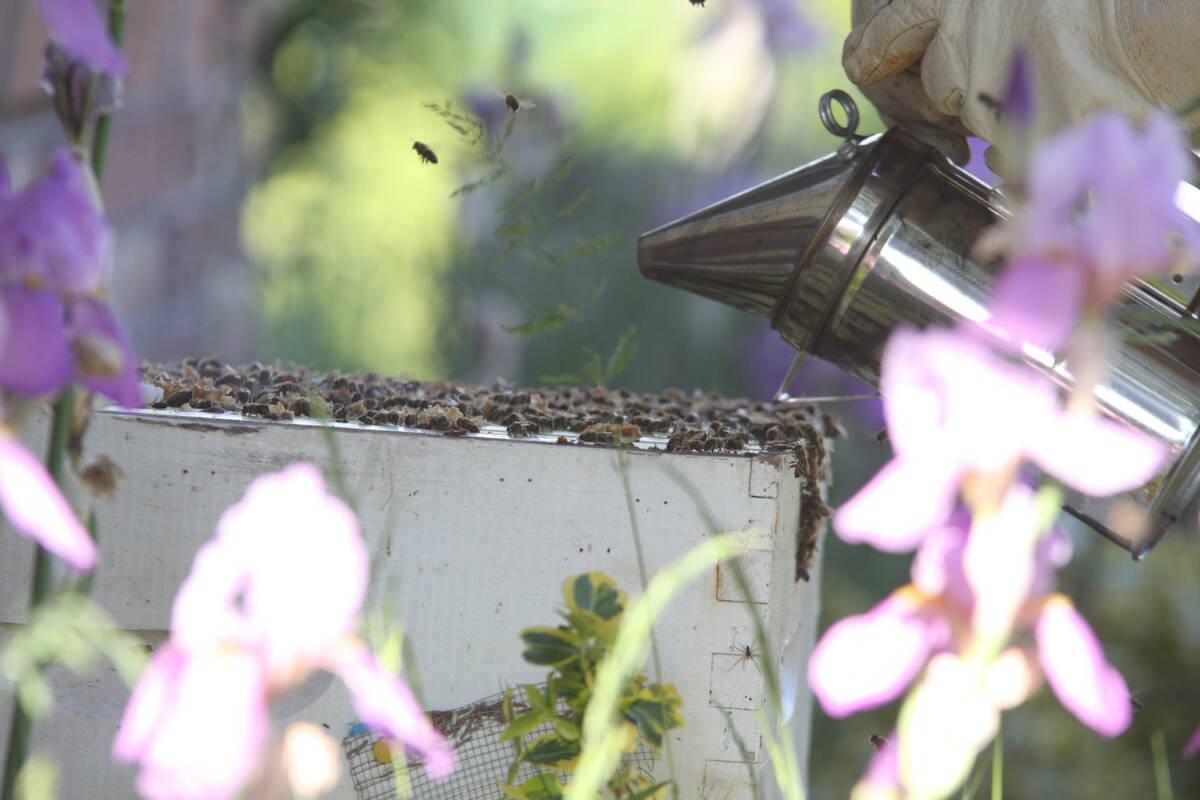There are plenty of inoculant options for alfalfa, the so-called king of forages, but options have trickled to nothing for lesser-grown forages such as sainfoin and red clover.
Members of the Canadian Forage and Grassland Association are trying to find a remedy.
“It’s one of those situations where a number of things have come together, and at the moment there just doesn’t seem to be much there in the marketplace,” said CFGA director Jack Kyle.
“The inoculants for legumes are basically not available other than alfalfa and sweet clover, which is the same inoculant.”
Read Also

Manitoba beekeepers battle for survival
Honeybee colony losses have hit 43 per cent, making 2025 the latest in a string of poor bee survival years for Manitoba’s honey producers
The low acreage planted to forages other than alfalfa and sweet clover is a hurdle for companies that supply inoculant.
As well, inoculant is applied only at seeding and forages are not seeded every year, which further reduces market size.
Growers might also not see a response to seed-applied inoculant, depending on rhizobia already present in the soil, so they might not use it every time they plant.
“There’s been some merger of companies the last few years, and then CFIA (Canadian Food Inspection Agency) requires registration and efficacy on these rhizobium, and that requires testing, and the market’s been fairly small and consequently the companies have chosen not to market it,” Kyle said.
David Townsend, brand manager for Becker Underwood, said the company stopped producing inoculum for minor forages a few years ago.
“We went through a huge analysis looking at grower and crop expectations and everything else a couple years ago. We made a corporate decision to just sell the alfalfa inoculant,” he said.
“I can understand the concerns around the availability, but with our analysis and what we had to do as a company, we made the decision … that all we do is produce for alfalfa.”
Darren Smith, the Lethbridge sales representative for Novozymes, said his company hasn’t made product for minor forages for several years because of the limited market.
Inoculant comprises rhizobia that populate the roots of forage plants and increase their ability to produce and fixate nitrogen, thus eliminating the need to fertilize with additional nitrogen.
Healthy amounts of nitrogen assist grass plants that are also growing in mixed pasture and provide residual nitrogen that can be used by the next crop in rotation.
Legumes grow without additional inoculum, but Kyle said there are advantages to giving them a boost.
“It’s a source of nitrogen for the legume plants, and if you don’t have properly inoculated plant roots, then the legume plant just isn’t as productive as it could be.”
Kyle said he understands the business reasons for inoculant manufacturers halting production.
However, he worries that legumes such as red clover, which is popular in Ontario and Quebec dairy country, and sainfoin, which has potential in Western Canada, will be less productive as a result.
There are also regional issues.
“We’ve grown red clover for years and years and years, and there’s a fair bit of rhizobium in the soil,” said Kyle of his farm in southern Ontario.
“If you go to Quebec, or parts of Quebec, the soil pH is lower and that native population isn’t there, so it becomes more important for them to have inoculant for red clover.”
He hopes that changes the CFIA plans to make to registration regulations will make it easier for companies to register and produce inoculum.
Townsend said he isn’t sure that will have a bearing on the matter, partly because new regulations reduce the need for efficacy testing but have greater emphasis on health and food safety assurances.
The end result may not reduce time or expense for companies with new products, although that remains to be seen.














